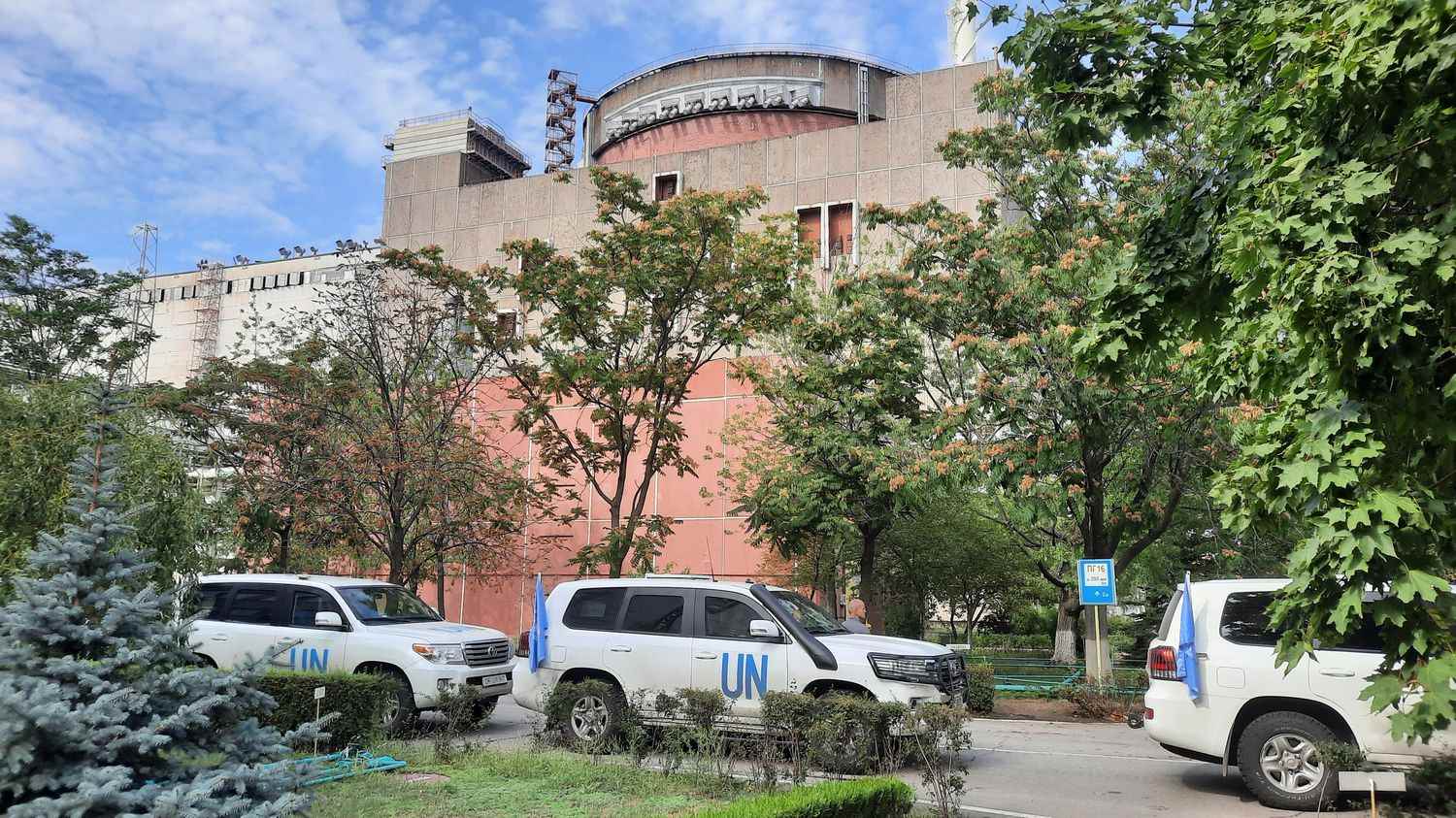What is striking when you arrive in Zaporijjia is first of all the impressive size of the industrial site, with its six nuclear reactors on the banks of the Dnieper River, as wide as a lake at this place. A huge and above all deserted place: almost no cars are parked in the car parks, no one circulates in the aisles. Ukrainian personnel, who have been working under Russian control since the army took over the plant, are reduced to the strict minimum, only to maintain and monitor the shutdown reactors.

The Zaporijjia power plant is the subject of all fears and all tensions, after several bombardments in August. Moscow and kyiv accuse each other of these strikes, which threaten the security of the area. Missiles, fallen near reactors, can cause leaks of radioactive substances, or even create a nuclear accident. So, to assess the security of the site and inspect the installation, experts from the International Atomic Energy Agency (IAEA) went on site on Thursday, September 1.
The traces of bombardment are not obvious: the buildings are well maintained, the paths are lined with flowers… At first glance, nothing suggests an imminent risk. But, a few hundred meters from reactor number 6, are the remains of a Totchka missile planted in the ground. IAEA inspectors immediately noted that given his position, he appeared to be coming from the Russian side. The Russian soldiers present immediately explained that with the inertia, the missile had turned over while entering the ground.

The leaders of Rosatom, the Russian power plant constructor, then took the IAEA inspectors to see other bombardments, right next to a dozen large tanks filled with diesel. “At four o’clock this morning, the Ukrainian army began shelling the city and the power plantdenounces a leader of Rosatom. These tanks are regularly bombarded with fragmentation shells.”
“It’s frightening to think of what would happen if these 240 tonnes of fuel ignited. Here at Enerhodar, there are no means to quickly put out this type of fire.”
A leader of Rosatomat franceinfo
And when Rafael Grossi, the head of the IAEA at the head of the delegation of experts, asks him if they have the means to determine where these shots come from, his interlocutor answers in the affirmative: “Obviously ! Obviously…“

However, the two camps pass the buck and accuse each other of being behind the bombings, which threaten the plant. If the shots did only minor damage, the level of tension remains extremely high. During the visit, artillery fire was heard a few kilometers away. The plant is located in the heart of a war zone and many voices are calling for the site to be demilitarized so as not to risk global nuclear safety.
The Russians did not hesitate to make thinly veiled threats to the inspectors.
“What you have to understand is that as long as the Ukrainians don’t stop bombing the plant, Ukraine, Russia, Europe will be in great danger. And that’s not politics!”
A leader of Rosatomat franceinfo
“We don’t want war”, added this leader of Rosatom, which provoked a somewhat annoyed reaction from Rafael Grossi, the boss of the IAEA. The Russian forces claim that the Zaporizhia plant is in a satisfactory state of safety, which seems to be confirmed by the absence of traces of abnormal radioactivity around the site. But the IAEA inspectors only stayed three hours on site, which is not enough to be able to make an accurate diagnosis. Nevertheless, Rafael Grossi made it clear that Russian control of the plant was “a violation of his physical integrity”.
The Zaporijjia power plant is distinguished first of all by its size and size: it is the largest in Europe with its six 1000 MW reactors, and represents 15% of Ukrainian electricity production. If it remained shut down under Russian control, winter could be even more complicated for Ukrainians. For their part, the Russians lack the means of electricity production to supply Crimea, annexed in 2014, and the territories they have just conquered: they could therefore be tempted to get their hands on the resources of the Zaporijjia site. A Russian soldier said during the visit that Rosatom was preparing to replace Ukrainian teams with Russian teams to run the plant.

This visit to the Zaporijjia power plant was exceptionally covered by the foreign press. Very special working conditions because you only see what they want to show you, but which are often one of the few ways to access these areas under high surveillance. The Russians have also authorized the presence of foreign media for a public communication operation: this makes it possible to assert before the whole world that it is the Ukrainians who are bombing the plant, an unverifiable fact, but which also makes it possible to put a certain pressure on IAEA experts.
“We were able to gather a lot of information in a few hours. We will continue our analysis, we have achieved something very important today, and the most important thing is that the IAEA is staying here. Let the world know that the IAEA is staying in Zaporizhia!”
Rafael Grossi, IAEAat franceinfo
The IAEA is due to return to the Zaporijjia site this Friday, and is asking to set up a permanent mission at the plant, a request that the Russians do not seem determined to grant them.
